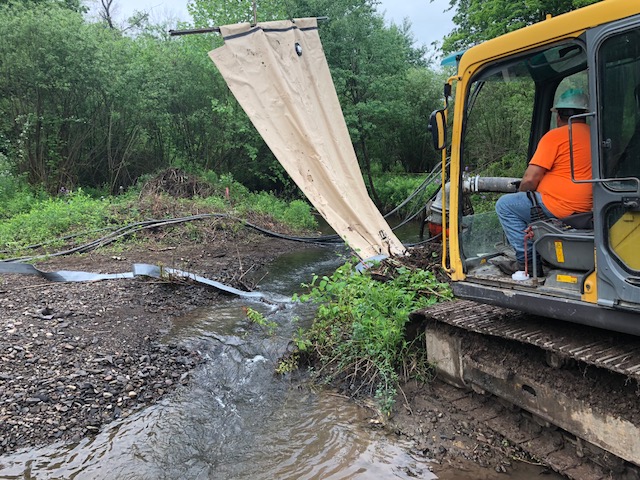
23 Jul Water Filled Cofferdam Moving Water Installation Procedure
A water filled cofferdam moving water installation procedure for success. While deploying the cofferdam in a moving water situation, you can accomplish the installation with man power and minimal equipment usage. However moving water deployments differ from stagnant water deployments with the difference being heavy equipment involvement. The Detroit Tarp Water filled cofferdams come with many features designed to make the installation a breeze. This article will highlight successful installations advised by trained Detroit Tarp representatives and should only be used as a guideline. Every project is different so be sure to contact your Detroit Tarp cofferdam rep for further instructions at 800-457-5054.
Moving Water Installation
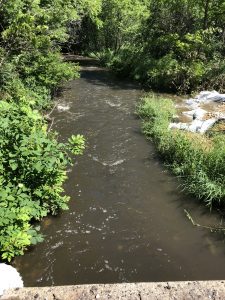
Identify the location where the water filled cofferdam will be placed. It is extremely important to survey the area and be sure to clear the area of any hazardous and foreign objects (sharp rocks, rebar, glass, logs and other damaging objects. ) At that time you should have developed a bypass plan (pump around,diversion channel,flume pipe ect.)
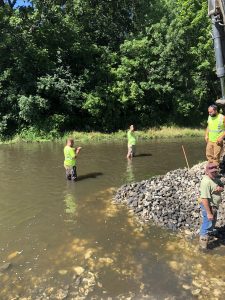
During the site survey, locate the deepest location where the water filled cofferdam will be installed. Once that area is located take a few measurements to find the depth. Depth should be measured from a solid bottom, if there is silt, that will also need to be included in the measurement.
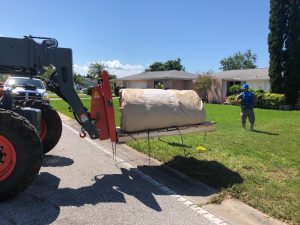
After the area is surveyed and the site has been measured and cleared from all debris, the installation can begin. The Detroit Tarp water filled cofferdams will arrive on a pallet as small as four feet wide by four feet long and can be moved to installation location easily with onsite equipment. The dam is in a roll form and direction of unrolling should be identified.
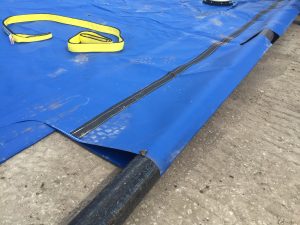
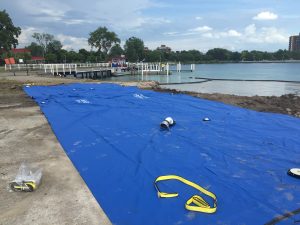
Place the cofferdam in an area large enough to open all the way up until it is unfolded fully. Begin attaching your hose to the fill port for filling the cofferdam later. You will need to attach one end of the cofferdam to a shoreline anchor point and another end to the excavator using the pipe loop feature. We recommend using a continuous schedule 40 steel pipe for lifting from the pipe loop and the properly rated lifting straps.
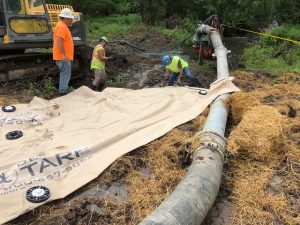
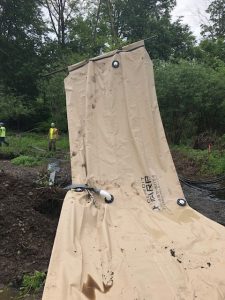
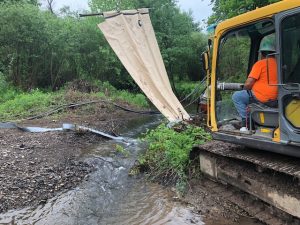

You are now ready to move the cofferdam into place. Utilizing your equipment begin pumping the water into the cofferdam. As the cofferdam builds head pressure and tension slowly lower into place. Repeat this multiple times until the dam is fully in contact with the ground below the surface of the water. Continue filling the dam to its recommended height. And you can now safely dewater your worksite. Monitor the cofferdam height, water levels and possible movement of the dam multiple times a day. If there is any concerns call a STOP WORK and have all personal in the cofferdam area meet in a safe location to discuss. Every project is different and this is just an overview of a installation process so be sure to contact your Detroit Tarp cofferdam rep for further instructions at 800-457-5054. https://detroittarp.com/contact-us/



No Comments